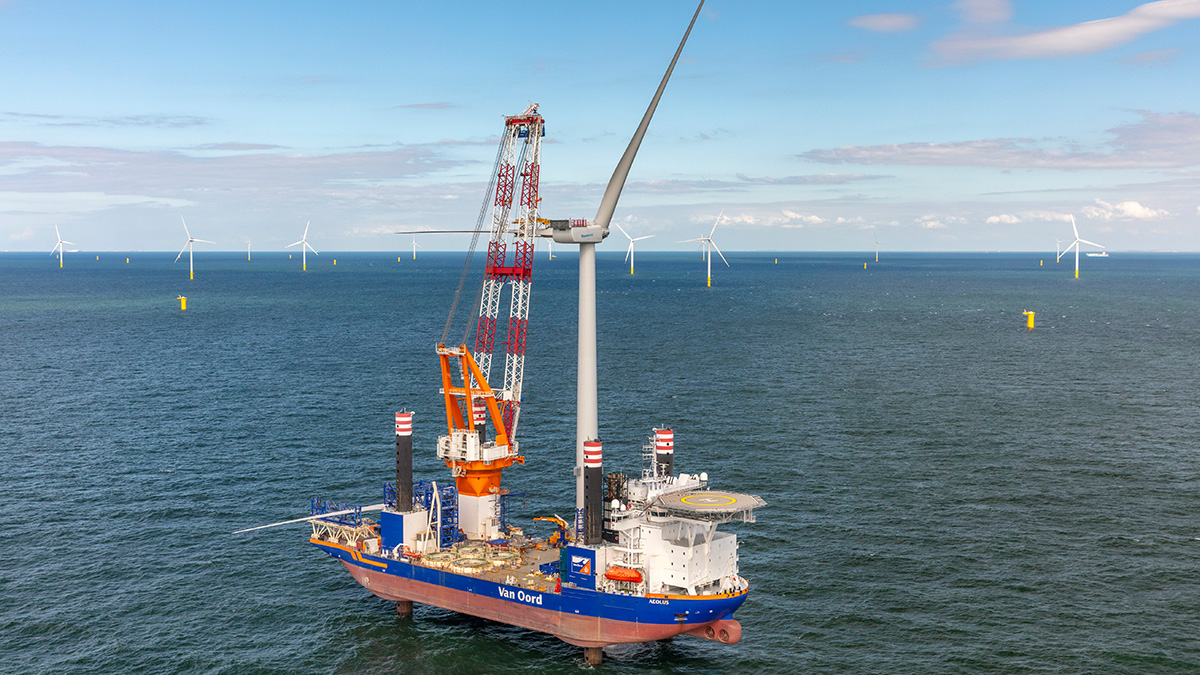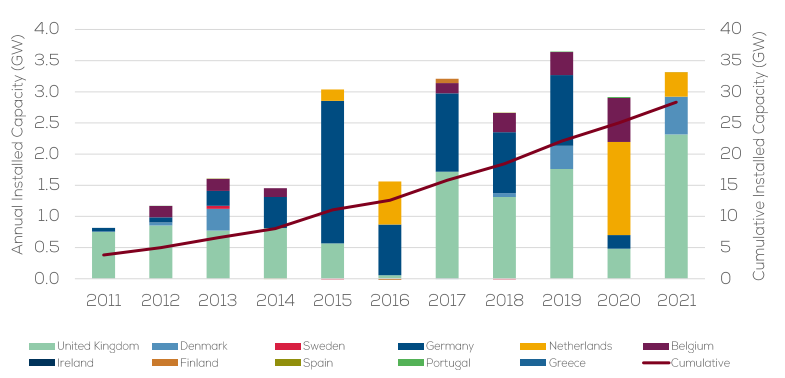Oceans of opportunity

28 GW
Europe is the leader in offshore wind and is home for the largest operational wind farms for both bottom fixed and floating foundation technologies. Europe’s offshore capacity is sufficiently large enough to supply the electricity demand in Europe which will only continue to grow within the upcoming years. Europe installed a new record 3.6 GW of offshore wind capacity in 2019 but requires major investment in infrastructure and increase installation rates if it aims to deliver its climate targets. European Governments targets and ambitions together pledge to deliver up to 160 GW of wind capacity by 2030 but this requires almost a constant fivefold in delivery rates for the rest of the decade. Huge investments are needed in offshore grid connections and also in the reinforcements of onshore grids. And ports need €6.5bn of investments over the decade to prepare for the 2030 installations and beyond.
Cumulative and annual offshore wind installations 2010-2021

Offshore wind theorical potential could generate between 2,600 TWh and 6,000 TWh per year at a competitive cost – €65/MWh or below [1]. The European Green Deal aims to make Europe climate neutral by 2050. This requires 760 GW of onshore wind and 450 GW of offshore wind. WindEurope report ‘Our energy, our future’ examines where 450 GW of offshore wind could be deployed most cost-effectively around Europe, to deliver climate neutrality by 2050. The report concludes that 212 GW should be deployed in the North Sea, 85 GW in the Atlantic (including the Irish Sea), 83 GW in the Baltic, and 70 GW in the Mediterranean and other Southern European waters.
The European Commission presented in November an EU Offshore Renewable Energy Strategy which will shape the development of offshore wind in Europe for the next 30 years. The strategy will enable all European sea basins to benefit from offshore wind. It supports the further expansion of floating offshore wind which will be needed for the deeper waters in the Atlantic, Mediterranean and Black Sea.
If you would like to see the geographical distribution of the wind farms in Europe click here.
Key documents
- Offshore wind in Europe – Mid-Year statistics 2022 (Members only)
- Offshore wind vessel availability until 2030: Baltic Sea and Polish perspective
- Offshore wind in Europe – key trends and statistics 2021
- Getting fit for 55 and set for 2050
- A 2030 Vision for European Offshore Wind Ports: Trends and Opportunities
- Offshore wind in Europe – key trends and statistics 2020
- Ports: a key enabler for the floating offshore wind sector
- Offshore wind in Europe – Mid-Year statistics 2020 (Members only)
- Offshore wind and fisheries (Members only)
- Our Energy, Our Future: How offshore wind will help Europe go carbon-neutral
- Offshore wind in Europe – key trends and statistics 2019
- Offshore wind in Europe – Mid-Year statistics 2019 (Members only)
- Driving cost reductions in offshore wind
- Unleashing Europe’s offshore wind potential


